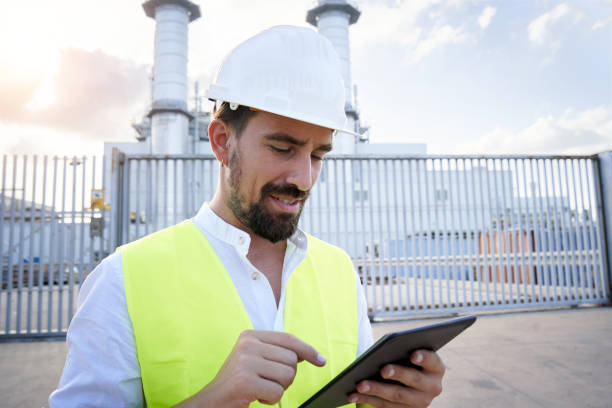Balancing thermostats and zones for consistent warmth
Achieving consistent warmth across a home often depends on properly balanced thermostats and zoned heating systems. This article outlines practical steps for calibrating thermostats, managing airflow between zones, and integrating furnace or boiler inspections to maintain efficiency and safety throughout the heating season.

Balancing thermostats and zoning controls can transform how evenly heat is distributed in a building. Proper calibration, routine inspection, and attention to airflow each play a role in preventing cold spots, reducing energy waste, and extending the life of equipment such as a furnace or boiler. This article walks through practical maintenance, diagnostics, and scheduling tips that support consistent indoor temperatures and safer operation during colder months.
How does thermostat calibration affect comfort?
A thermostat that is improperly calibrated will cause inconsistent temperatures and unnecessary cycling of heating equipment. Calibration is the process of verifying that the thermostat’s temperature reading matches a reliable thermometer and adjusting settings if there’s a discrepancy. Small differences—often just a degree or two—can create complaints in different zones. For programmable or smart thermostats, ensure the device firmware is current and the placement is free from drafts, direct sunlight, or nearby heat sources that distort readings.
Many homeowners benefit from taking simple measurements in each zone and recording differences. If calibration adjustments don’t resolve imbalance, consider sensor relocation, using remote sensors, or consulting a technician who can test the thermostat output relative to the furnace or boiler control signals.
When should you inspect a furnace or boiler?
Regular inspection of a furnace or boiler is a key part of maintaining balanced zones. Annual or biannual inspections identify issues such as worn components, clogged filters, or inefficient combustion that can reduce heat output and cause uneven distribution. An inspection typically covers filter condition, burner operation, combustion efficiency, pilot and ignition systems, and overall ventilation integrity.
Scheduling an inspection before the heating season begins helps catch problems early. If you notice unusual noises, frequent cycling, unexplained energy use increases, or persistent cold rooms, arrange diagnostics with a qualified technician to evaluate the heat source and associated controls.
How do filters and airflow influence efficiency?
Filters affect airflow and system efficiency directly. A clogged filter restricts airflow, forcing a furnace or boiler-driven distribution system to work harder and reducing heat delivered to distant zones. Regular filter replacement is one of the simplest steps to improve performance. Check filters monthly during heavy use and change them according to manufacturer recommendations.
Beyond filters, ensure vents and registers are open and unobstructed, and that return-air pathways are clear. Balancing dampers in ducts can be adjusted to redistribute airflow to colder areas; when using zoned controls, dampers work in concert with thermostats to channel conditioned air where it’s needed most.
What combustion and ventilation checks matter for safety?
Combustion performance and proper ventilation are essential for safe and efficient heating. For systems using fuel—gas, oil, or coal—combustion diagnostics ensure the correct mix of fuel and air, limiting carbon monoxide risk and improving energy conversion. Ventilation pathways, including flues and chimneys, must be clear to allow combustion byproducts to exhaust safely.
Safety checks should include testing for gas leaks, verifying flue drafts, and ensuring carbon monoxide detectors are installed and functional in occupied spaces. If combustion diagnostics show poor performance, service personnel may need to adjust burners, clean heat exchangers, or repair seals to restore safe operation.
When to winterize and schedule diagnostics?
Winterizing tasks prepare systems for sustained use: change filters, clean heat exchangers, inspect ventilation, and confirm thermostat schedules are optimized for occupancy patterns. Scheduling diagnostics in the fall helps identify issues before peak demand. During diagnostics, technicians can test zone controls, check damper operation, verify calibration, and perform combustion and safety tests.
Routine scheduling—annual inspections for boilers or furnaces and more frequent checks for older equipment—reduces the chance of midwinter failures. Keep a simple maintenance calendar and record diagnostics results to track trends in efficiency and anticipate repairs.
How do zoning and thermostat balance save energy and ensure safety?
Zoning lets different areas run at different temperatures based on use, which can reduce energy consumption while maintaining comfort. Properly balanced thermostats and functioning zone dampers prevent equipment short cycling and uneven load distribution on a furnace or boiler. When one zone demands heat, controls should isolate that area rather than overworking the entire system.
For safety and energy efficiency, combine zoning with routine calibration, filter changes, and combustion/ventilation checks. Integrate diagnostics and scheduling into yearly maintenance plans, and use local services if you need specialized balancing or complex repairs. Consistent warmth comes from coordinated attention to thermostat settings, airflow management, and reliable operation of the heat source.
Conclusion
Balanced thermostats and well-managed zones improve comfort, lower energy waste, and support safer operation of furnaces and boilers. Regular inspection, correct calibration, clean filters, good airflow, and scheduled diagnostics form the foundation of reliable heating performance throughout the season. Implementing these steps helps reduce cold spots and keeps systems operating closer to their intended efficiency.






